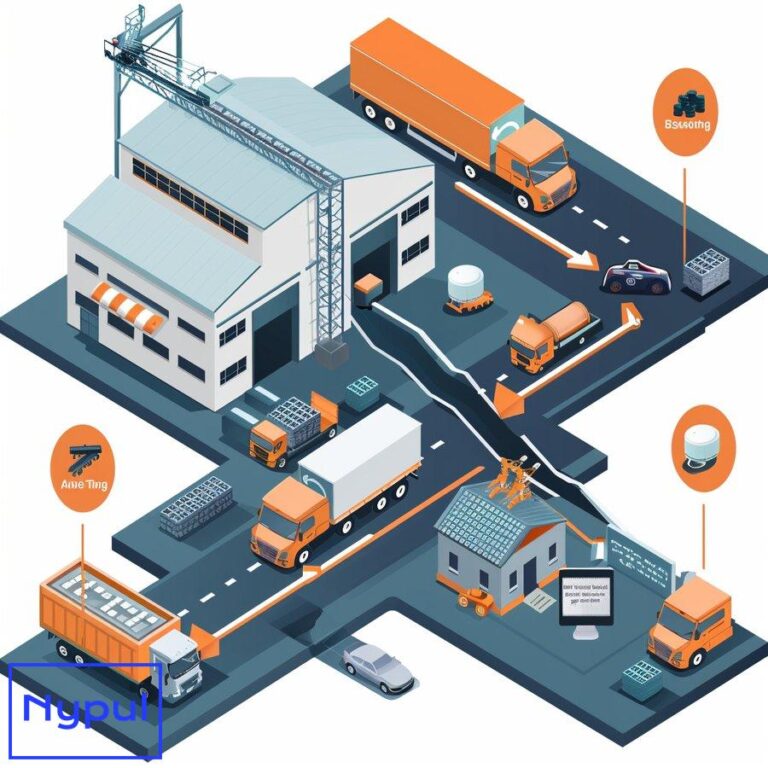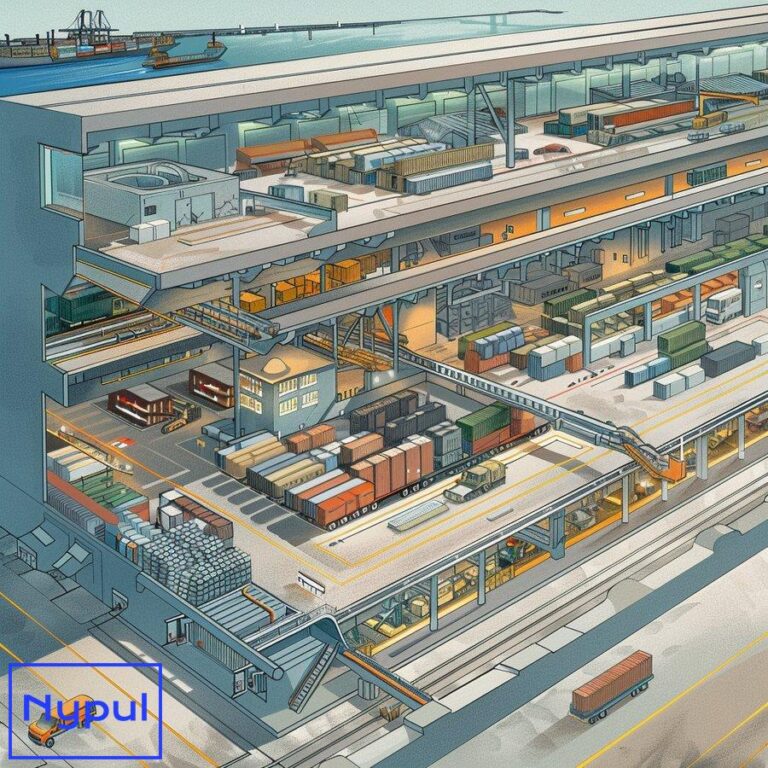What Are the Accessorial Charges for Drayage
What are drayage accessorial charges and why do they matter?
Drayage accessorial charges are additional fees that shippers may incur beyond the standard drayage service. These charges cover a variety of services and situations that fall outside the scope of a typical drayage move. Understanding these charges is crucial for shippers to accurately budget for their drayage needs and avoid unexpected costs.
![]()
Importance of Drayage Accessorial Charges
Transparency in Budgeting
By being aware of potential accessorial charges, shippers can create more accurate budgets for their drayage operations. This transparency helps prevent surprises and allows for better financial planning.
Efficiency in Operations
Some accessorial charges, such as detention fees, can be avoided through efficient planning and communication. Understanding these charges encourages shippers to optimize their processes and minimize unnecessary costs.
Negotiation and Carrier Selection
Knowledge of accessorial charges enables shippers to effectively negotiate rates with drayage providers and select carriers that offer the most competitive pricing and services aligned with their specific needs.
What are the most common types of drayage accessorial charges?
Several types of accessorial charges may apply to drayage services, depending on the specific circumstances of the shipment. Here are some of the most common charges:

Detention Charges
Detention charges apply when a driver is delayed at the pickup or delivery location beyond a specified free time, typically due to factors such as long wait times for loading or unloading.
Demurrage Charges
Demurrage charges are incurred when containers are not picked up from or returned to the port or rail terminal within the allotted free time. These charges are imposed by the port or terminal and passed on to the shipper by the drayage provider.
Layover Charges
Layover charges apply when a driver is required to wait overnight for a pickup or delivery due to scheduling issues or other factors outside of their control.
Overweight Charges
If a container exceeds the maximum allowable weight limit, additional charges may apply to cover the cost of special handling, permits, or equipment required to transport the overweight load.
Tri-Axle Charges
When a shipment requires a tri-axle chassis to accommodate heavier loads or to meet specific state regulations, additional charges may be incurred.
Hazardous Material (HAZMAT) Charges
Shipments containing hazardous materials often incur additional charges due to the special handling, documentation, and equipment required to ensure safe transportation.
Fuel Surcharges
Fuel surcharges are often applied to drayage services to account for fluctuations in fuel prices and to help carriers recover a portion of their fuel costs.
How are drayage accessorial charges calculated?
The calculation of drayage accessorial charges varies depending on the specific charge and the drayage provider. However, here are some common methods:


Hourly Rates
Charges like detention and layover are often calculated based on an hourly rate after a specified free time has elapsed. For example, a carrier may offer 2 hours of free time for loading or unloading, after which detention charges apply at a rate of $75 per hour.
Per Diem Rates
Demurrage charges are typically calculated using a per diem rate, which is a daily charge for each day the container remains at the port or terminal beyond the allowed free time. These rates can vary based on the port, container type, and other factors.
Flat Fees
Some accessorial charges, such as overweight or HAZMAT charges, may be assessed as flat fees. These fees are predetermined and applied whenever the specific service or condition is required.
Percentage-Based Fees
Fuel surcharges are often calculated as a percentage of the base drayage rate. The percentage may vary depending on the current price of fuel and is typically adjusted periodically.
| Accessorial Charge | Calculation Method | Example |
|---|---|---|
| Detention | Hourly Rate | $75 per hour after 2 hours of free time |
| Demurrage | Per Diem Rate | $150 per day after 5 days of free time |
| Overweight | Flat Fee | $250 per overweight container |
| Fuel Surcharge | Percentage | 15% of base drayage rate |
It’s essential for shippers to carefully review their drayage provider’s accessorial charge policies to understand how these fees are calculated and to ensure they are being charged accurately.
What factors influence the cost of drayage accessorial charges?
Several factors can impact the cost of drayage accessorial charges, including:
Port or Terminal Location
The specific port or rail terminal where the container is picked up or dropped off can influence accessorial charges. Some locations may have higher demurrage or detention rates due to congestion, limited operating hours, or other factors.
![]()
Shipment Characteristics
The size, weight, and contents of the shipment can affect accessorial charges. Overweight or oversized containers may incur additional fees, while HAZMAT shipments require special handling and documentation, leading to higher costs.
Seasonal Demand
During peak shipping seasons, ports and terminals may experience increased congestion, leading to longer wait times and a higher likelihood of incurring detention or demurrage charges.
Carrier Policies
Each drayage provider has its own policies regarding accessorial charges, including the length of free time, hourly rates, and specific fees for various services. Carriers with more lenient policies may have lower accessorial costs.
Market Conditions
Economic factors, such as fuel prices and overall transportation demand, can influence the cost of accessorial charges. For example, higher fuel prices may result in increased fuel surcharges.
By understanding these factors, shippers can make informed decisions when selecting drayage providers, scheduling shipments, and planning their supply chain operations to minimize accessorial costs.
How can shippers minimize drayage accessorial charges?
Shippers can take several steps to reduce their exposure to drayage accessorial charges:

Efficient Scheduling
Coordinate with suppliers, carriers, and consignees to schedule pickups and deliveries during off-peak hours or on days with lower congestion to minimize the risk of detention and layover charges.
Clear Communication
Provide accurate and timely information to drayage providers regarding shipment details, special requirements, and any potential delays. This helps carriers plan effectively and reduces the likelihood of incurring accessorial charges.
Prompt Document Processing
Ensure that all necessary documents, such as bills of lading and customs paperwork, are completed and submitted promptly to avoid delays that could lead to demurrage or detention fees.
Adequate Staffing
Maintain sufficient staff at loading and unloading facilities to minimize driver wait times and prevent detention charges.
Carrier Selection
Choose drayage providers with competitive accessorial charge policies, such as longer free time allowances or lower hourly rates. Consider negotiating favorable terms for accessorial charges as part of your carrier agreements.
Technology Adoption
Utilize transportation management systems (TMS) and other logistics technologies to automate processes, improve visibility, and optimize routes, reducing the risk of incurring accessorial charges.
Continuous Improvement
Regularly review and analyze your drayage operations to identify areas where accessorial charges are frequently incurred. Implement process improvements and best practices to address these issues and reduce costs over time.
What role does technology play in managing drayage accessorial charges?

Technology plays a crucial role in helping shippers manage and minimize drayage accessorial charges. Here are some key ways technology can assist:
Visibility and Tracking
Transportation management systems (TMS) and real-time tracking solutions provide shippers with visibility into the status of their drayage shipments. This allows them to monitor for potential delays and proactively address issues that could lead to accessorial charges.
Automation and Optimization
Technology can automate various aspects of the drayage process, such as document submission, appointment scheduling, and carrier communication. This reduces the risk of human error and streamlines operations, minimizing the likelihood of incurring accessorial fees.
Data Analytics
By analyzing historical data on accessorial charges, shippers can identify patterns and trends that contribute to higher costs. This information can be used to make data-driven decisions about carrier selection, scheduling, and process improvements.
Collaborative Platforms
Collaborative logistics platforms enable shippers, carriers, and other stakeholders to communicate and share information in real-time. This improves coordination and reduces the risk of delays or miscommunications that could result in accessorial charges.
Predictive Analytics
Advanced analytics tools can use machine learning algorithms to predict potential delays or disruptions in the drayage process. By anticipating these issues, shippers can take proactive measures to mitigate the risk of incurring accessorial charges.
| Technology Solution | Benefit |
|---|---|
| TMS with Real-Time Tracking | Improved visibility and proactive issue resolution |
| Automated Document Submission | Reduced risk of delays and human error |
| Data Analytics | Identification of cost-saving opportunities |
| Collaborative Platforms | Enhanced communication and coordination |
| Predictive Analytics | Anticipation and mitigation of potential disruptions |
By leveraging these technologies, shippers can gain greater control over their drayage operations, reduce accessorial costs, and improve overall supply chain efficiency.
How do drayage accessorial charges impact overall logistics costs?
Drayage accessorial charges can have a significant impact on a shipper’s overall logistics costs. Here’s how:
Direct Cost Increases
Accessorial charges represent additional fees beyond the base drayage rate. When these charges are incurred frequently or in large amounts, they can significantly increase the total cost of drayage services.

Budgeting Challenges
Unpredictable accessorial charges make it difficult for shippers to accurately budget for their drayage expenses. This can lead to cost overruns and impact the overall financial performance of the supply chain.
Reduced Cost Predictability
The variability of accessorial charges makes it challenging to predict and control drayage costs. This lack of predictability can complicate decision-making and hinder effective cost management.
Opportunity Costs
High accessorial charges may force shippers to allocate more resources to drayage operations, diverting funds from other areas of the supply chain that could benefit from investment, such as technology or process improvements.
Competitive Disadvantage
Shippers with higher drayage accessorial costs may be at a competitive disadvantage compared to those with more efficient operations and lower accessorial fees. This can impact their ability to offer competitive pricing to customers.
To mitigate the impact of drayage accessorial charges on overall logistics costs, shippers should:
- Continuously monitor and analyze accessorial charges to identify trends and opportunities for cost reduction.
- Implement process improvements and best practices to minimize the occurrence of accessorial fees.
- Invest in technology solutions that provide visibility, automation, and optimization capabilities to streamline drayage operations.
- Collaborate with drayage providers to negotiate favorable accessorial charge policies and rates.
- Incorporate accessorial charge considerations into carrier selection and performance evaluation processes.
By taking a proactive approach to managing drayage accessorial charges, shippers can reduce their impact on overall logistics costs and improve the efficiency and competitiveness of their supply chain operations.






